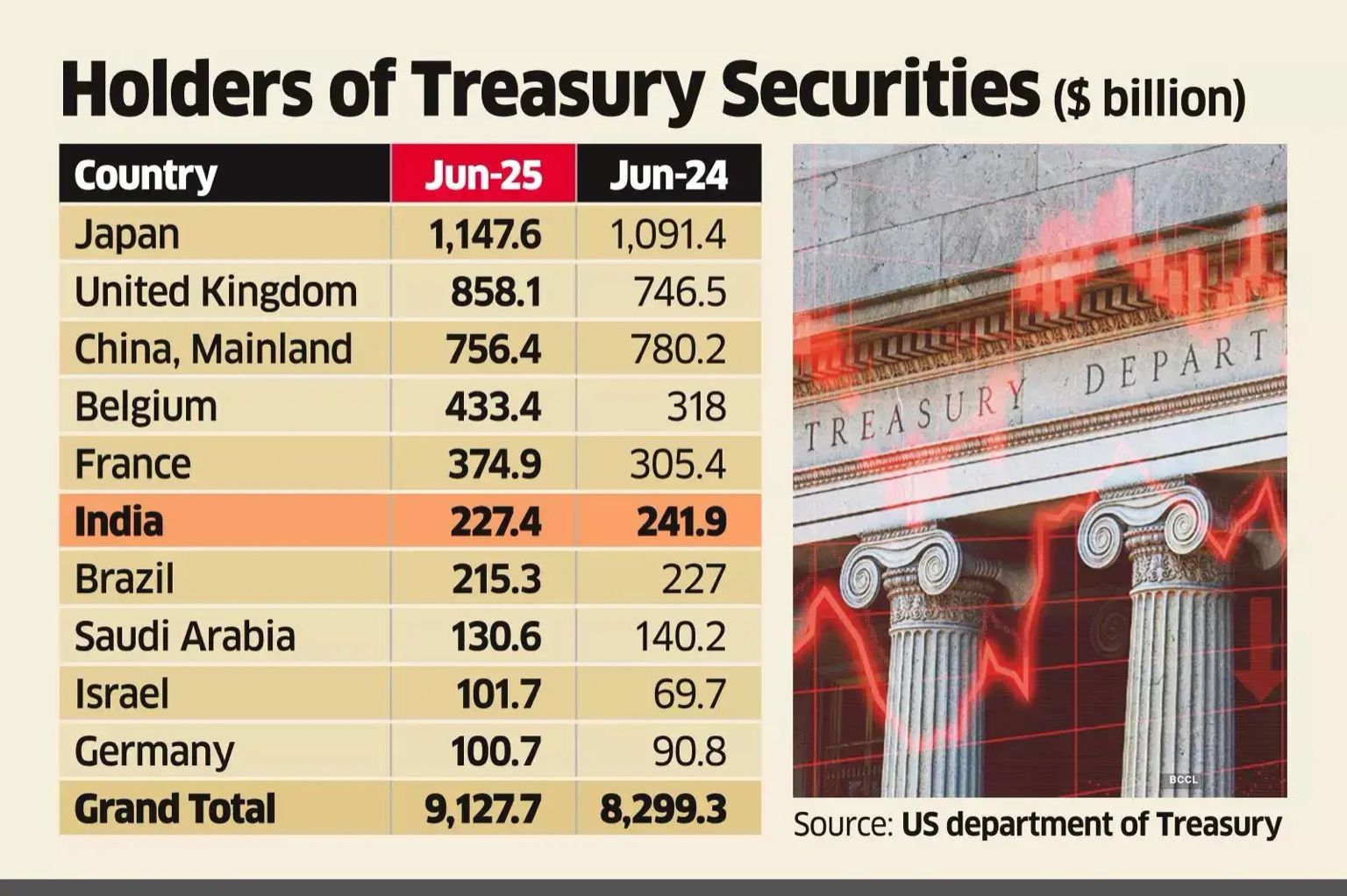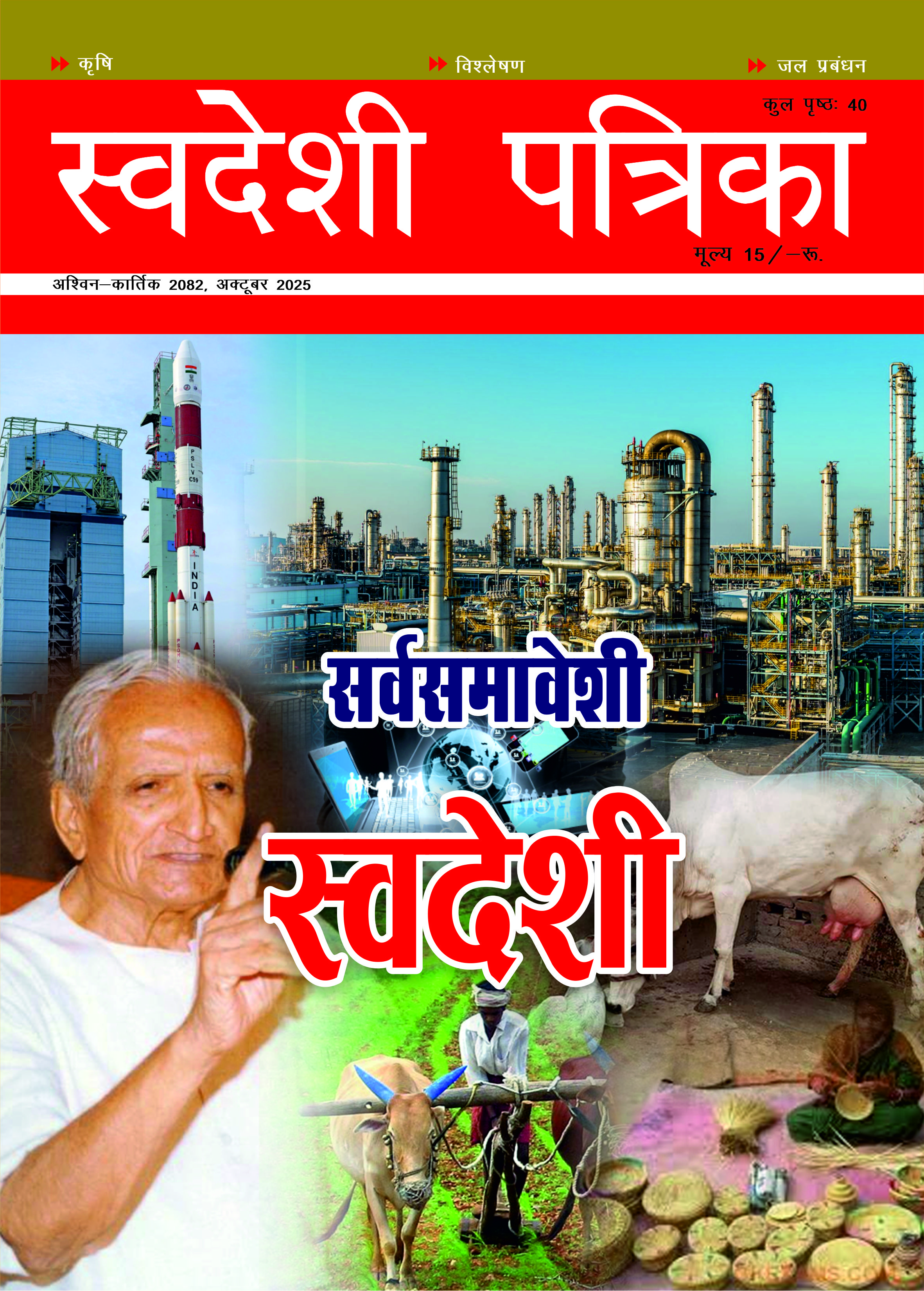
Trump Tariff and Trade War: Challenges and Opportunities for India
The current tariff war represents both a test and an opportunity for India. — Dr. Dhanpat Ram Agarwal
The global trade landscape is once again in flux. With the resurgence of tariff wars, particularly involving the United States, China, and the European Union, the world is witnessing renewed economic fragmentation. U.S. President Donald Trump has unilaterally imposed horrendous tariffs on a new two tiered tariff system with a baseline 10% on all US imports starting April 5 with additional reciprocal tariffs varying from countries to countries effective August 7. April 2, was declared “A Liberation Day” to make America Great Again or (MAGA) with several restrictions on Government Expenditure under a separate Ministry Department of Government Expenditure (DOGE).
His decision to impose such draconian and coercive tariffs have been challenged in US Courts and on 29th August US Federal Court of Appeals has given its judgment with 7/4 majority by holding the imposition of the Tariff under the pretext of National Emergency under the International Emergency Economic Powers Act of the 1977 (IEEPA) without obtaining the approval from US Congress as illegal. Trump has decided to move to the Supreme Court on the grounds that if this tariff is to be refunded and the US Administration is barred from exercising the power of imposing such a horrendous tariffs, it will be disastrous for the US treasury. However the Court of Appeals also stayed its ruling to October 15 to give time to the Trump administration to seek review in the United States Supreme Court.
Key Drivers of the Current Tariff War
Some countries including European Union has signed bilateral trade and comprehensive economic cooperation agreements with US succumbing to the US pressures even at the cost of their national interest in order to avoid conflicts with US. “Some countries including China have been given concessions for few more days as moratorium as US feared that imposing draconian duties as announced earlier to the extent of 145% on all imports from China have been restricted at 30% or so till a fresh negotiations as China threatened retaliatory measures including stopping supply of rare earth materials which is essential for semiconductors and for chip manufacturing apart from reciprocal tariffs on imports from US at more than 100% tariffs and restrictions on agricultural imports from US. However average tariffs on Chinese exports now stand at 57.6 percent and cover 100% of all goods and China’s average tariffs on US exports are at 32.6 percent and cover 100% of all goods.
However in case of India, US initially imposed 26% and later compromised for 25% tariffs on all imports from India except Pharmaceutical, Electronics and few Auto Parts with nominal or nil tariffs. However some negotiations were on the table between the two countries for signing a Fre Trade Agreement. There were two major issues on which India refused to sign the FTA, namely, first that India will not allow free trade on Agriculture including Dairy and Fisheries and second that India will continue buying crude oil and defence equipment’s and weapons from Russia. Trump Administration became very furious and started using unscrupulous language against India and issued threats that as long as India would be importing crude oil from Russia, US would impose additional penalties of 25% on all imports from India and this additional tariff will be effective from August 27 and has implemented 50% tariffs on Indian imports. India has blatantly refused to accept the coercive conditions and our Prime Minister Shri Narendra Modi has declared that our national interest and our economic sovereignty cannot be compromised and particularly We are pledged to safeguard the interests of our farmers, fishermen and our animal husbandry group for their livelihood. Prime Minister has given a clarion call for adopting Swadeshi and for emphasis on Make in India initiatives and has confidently proclaimed in his 15th August speech to the nation that we will convert the Challenge into opportunity. It may be noted that the frivolous threat of US in the past for imposition of Economic Sanctions post Pokharan in May 1998 was also answered boldly by our Indian diaspora by subscribing to India Resurgent Bond to the tune of US$6.5 Billion which was a big blow to the US hegemony and it came down on foot with President Clinton’s visit to India and surrendered by signing Indo-US nuclear deal and withdrawal of all economic sanctions in their own interests. India had performed very well in its exports in those two years and also had current account surplus in the financial year 2002-2003 and 2003-2004.
Implications and Challenges for India:
Export Vulnerability: The department of Commercial Intelligence and Statistics has prepared a detailed research paper and Global Trade Research Institute has also compiled the sector wise study on the adverse impact on the India’s exports to US in the coming financial year 2025-26 and 2026-27. It is heartening to note that the first quarter results show that our GDP during April- June 2025 has increased 7.8 percent which indicates that the adverse impact on GDP will be very minimal or may be 6 percent as against the original pre- Tariff impact of 6.5%.
A brief analysis is given below in simple manner.
1. The study says that U S Tariffs will hit 66% of India’s exports to US which was US$ 86.5 Billion in 2024-25 or in other words exports worth US$ 60.2 B of goods will be subject to 50% Tariff which includes Textiles, Gems- Jewellery, Shrimp, carpets, Steel, Aluminium and Machineries.
2. 30% of the US bound exports I.e., US$ 27.6B remains duty free being Pharmaceutical, APIs, Electronics including Smart phones.
3. US tariffs will slash India’s exports to US$ 49.6 billion in 2025-26, down by 43% from US$ 86.5 billion.
4. India’s overall global exports including goods and services will still rise to $ 839.5 Billion with increased services exports by nearly 10% to US$ 421.9 Billion. It is for clarity that in F/Y India’s exports in goods plus services was US$ 820.93 Billion of which goods exports was US$ 437.42 and Services exports was US$ 383.5 Billion.
5. There will be impact on the labour intensive MSME sectors in textile, diamond jewellery, carpets, agro processed food and certain other sectors for which Government of India is planning certain action plans which are narrated in brief as below:
Amongst several measures include Tax Reforms in GST, interest equalisation scheme to shield MSMEs to the tune of Rs 15000 crores. Government push for market diversification to EU, Gulf, East Asia Trade Missions as well as to Latin American countries and to Africa. India is trying to strengthen and rejuvenate its economic relationship with Japan and with its allies in BRICS, SCO and other countries in its Look East or Act East policies.
We are also looking for balancing ties between QUAD allies and BRICS+ partners becomes harder amid tariff polarization.
Opportunities:
1. Global Supply Chain Rebalancing:
- Companies seeking China+1 or China+2 strategies are evaluating India as a key alternative.
- Sectors like electronics (Apple, Foxconn), semiconductors (Micron, AMD), renewable energy, & defence manufacturing are seeing growing investment interest.
2. Strengthened Strategic Autonomy:
- India’s non-aligned position in tariff wars enhances its value as a trusted neutral trade partner.
- As countries seek diversified markets, India’s demographic dividend, political stability, and domestic consumption base become attractive.
3. New Bilateral Trade Partnerships:
- India has signed or is negotiating comprehensive trade agreements with the UAE, Australia, UK, and Canada. ASEAN, Africa, and Latin America are also emerging targets for expansion.
- The focus is shifting from tariff-based trade to investment-led trade integration.
4. Atmanirbhar Bharat Push:
- The global trend of protectionism aligns with India’s push for self-reliance, particularly in critical sectors like defence, electronics, semiconductors, and AI chips.
All nationalist organisations like Swadeshi Jagaran Manch have undertaken several campaigns and initiatives for an All India Awakening programme upto village level by organising Traders meet for boycotting Americans goods and for substituting their daily household requirements with Local Products. Swawalambi Suraksha Abhiyan is organised in all districts and hopefully India will be able to overcome this temporary hurdles and reemerge as a powerful nation.
The R.C. I factor, the TIANJIN TROIKA
The SCO meet at Tianjin during 31st August and 1st September particularly the bilateral meeting between Xi Jinping and our PM Modi and in a separate meeting between Mr Putin and Mr Modi and few informal meetings between the three leaders have given a very strong message to Trump about the strength of Eurasian countries. SCO have many members who are common in BRICS and this together makes Global South. Together they represent more than 50% of global GDP and also more than 50% of the global population. The combined leadership of Russia, India and China can definitely create strong ground for a New World Order and the shift in the global power. USA is the largest economy but if one looks at the quantum of increasing debt which is now US$ 37.5 trillion and is likely to cross US$ 45 Trillion in another 4-5 years, US economy is really in great trouble. The US Federal Court of Appeals has already given its judgment on 29th August about the illegal application of IEEPA by ignoring the legitimacy of the US congress and thus transgressing the rules of checks and balance, the withdrawal of the powers of illegitimate tariff would be disastrous to the US Treasury. Trump Administration is wary and afraid of the consequences and therefore likely to change its negotiating approach on draconian tariffs.
Conclusion
The current tariff war represents both a test and an opportunity for India. As global powers engage in protectionist battles, India must walk a strategic middle path—leveraging trade diplomacy, investing in domestic capacity, and positioning itself as the anchor of stability and supply chain resilience in a fragmented world. However the present crisis can be turned into an opportunity only if We Indian follow the path of Swadeshi and also realise the growing importance of technology and innovation for which we need to build a robust education system for promoting new ideas by spending maximum resources for a very strong Research for Science and technological development.
The writer is National Co-convenor of SJM.


